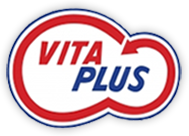
Fall milk slump and low digestible forages?
 By Rod Martin
By Rod MartinIn the past couple months, we have heard a lot of discussion on lower milk production and higher components. We typically see this phenomenon every year during the fall season, but it seems to be more pronounced this year.
Consultants and producers have been evaluating and implementing ration strategies with the goal of increasing milk production while still maintaining good components. Low forage NDF digestibility has been a common theme based on forage lab analyses. In addition, feeding new corn silage and corn, along with shorter day length, is also a likely contributor to the low milk production and high components.
Although we have gained some understanding of forage NDF digestibility and factors affecting fall milk production, troubleshooting this low production/high component phenomenon remains one of the more challenging tasks. This is due to the many different nutritional, environmental, and management factors that can affect milk production as well as the interactions that can take place between them.
The bottom line: Don’t expect a single dietary or management factor to be the answer!
What are we seeing?
- Milk production is 4 to 8 pounds lower than we would expect.
- Fat test is running well above 4.0 percent in Holstein herds. We are receiving reports of 4.3 to 4.4 percent fat tests.
- Protein tests are also running high. In amino acid-balanced herds, we are seeing protein tests as high as 3.4 percent.
- We are adjusting diets by increasing starch levels, adding byproducts to increase dietary NDF digestibility, and lowering the overall NDF levels.
- Even with these ration adjustments, milk production still lags and we are asking what else can be done to increase overall milk production while maintaining good components.
Important point to remember
Calculate the pounds of fat and protein produced per cow daily. Even though milk production is lagging, your total pounds of fat and protein could be reasonably good due to the high component percentages.
For example, let’s say your herd is milked three times per day and averages 80 pounds of milk, 4.1 percent fat and 3.3 percent protein. This results in a yield of 5.92 pounds of combined fat and protein. But you think your herd should be 6 pounds of milk higher.
If you can maintain the same components, obviously 6 pounds of milk is great deal. However, if you increase milk production to 86 pounds, but milk fat drops to 3.75 percent and milk protein drops to 3.15 percent, the combined fat and protein yield stays the same, so you have no economic advantage to the extra 6 pounds of milk unless you can maintain components greater than 3.75 percent fat and 3.15 percent protein.
Ration strategies to consider
- Adjust forage ratios: If possible, incorporate more of the higher digestible forage by blending multiple haylage crops.
- Add more starch: Add more properly processed starch in the diet. Consider increasing the starch level up to 30 percent in the total diet. Some consultants have incorporated straight starch at a rate of 1 to 2 pounds per cow daily. However, it is important to closely monitor signs of subacute ruminal acidosis (SARA) since you have less room for error at these higher starch levels.
- Incorporate digestible byproducts: Depending on your location, you may have access to good buys on byproducts that can increase the overall ration NDF digestibility. Corn gluten feed, soy hulls and beet pulp have high NDF digestibility.
- Take a look at uNDF: This year may be an opportunity to study uNDF (undigestible NDF) in greater detail. Make special note of the uNDF 240 values on 2014 forage analyses. While balancing rations for uNDF is not ready for primetime, feeds such as beet pulp, corn gluten feed and soyhulls have low uNDF values (high digestibility). In contrast, brewers grains, wheat midds and cottonseed have higher uNDF values (low digestibility).
- Increase Rumensin® levels: This feed additive will increase energy efficiency of the diet and is very economical. You can feed up to 22 grams of Rumensin per ton of ration dry matter.
- Consider other calories: Bypass fat is an energy-dense product that may or may not be a good economic fit to consider.
The double-edged sword
We have high inventories of forage on our farms and want to maximize the on-farm forage intake to reduce off-the-farm feed costs. In addition, we want high milk production, but we also want to maximize the homegrown forage intake even if the forage digestibility is low.
This is a tough predicament to be in and it is important to find that sweet spot of good milk production while minimizing off-the-farm feed costs. The real answer is to maximize income over feed costs, and this needs to be evaluated on a farm-to-farm basis.
Summary
Work closely with your consultant to define your production and component goals. It is to understand the trade-off of feeding more forage with lower production compared to feeding more byproducts/starch and higher production. With high milk prices, determine which feeding strategy will maximize the income over feed cost for your herd.
About the author: Rod Martin is a dairy specialist and a member of the Vita Plus dairy technical services team. He grew up on his family’s diversified livestock farm in southwest Wisconsin and attended the University of Wisconsin-Madison, where he earned a bachelor’s degree in agricultural education and animal science, and a master’s degree in animal nutrition. He has 24 years of experience in consulting with Midwest dairy operations.
| Category: |
Dairy Performance Feed quality and nutrition Milk production and components Silages |

